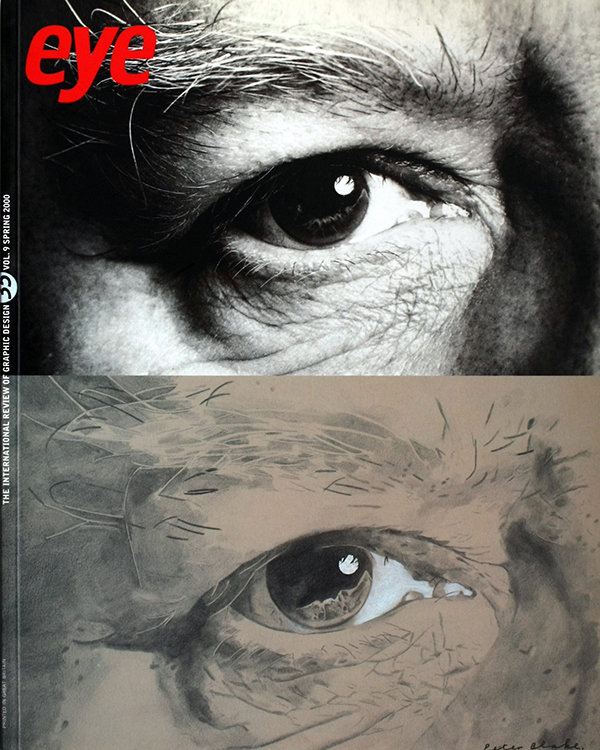Spring 2000
Editorial Eye 35
Whenever there is a burning issue, be it the end of illustration or the ethics of advertising, the plea for more “more debate” soon follows. Editors of cultural journals love to entertain the conceit of a feisty letters section, in which correspondents delight in the cut and thrust of intelligent discourse. This is also the goal of Web discussion groups, and conferences that leave seminar time for a “lively question and answer session”.
The reality is that the letters pages of music, arts and literary magazines are stuffed with fan mail, insults, complaints, corrections and attention-seeking. And now we have the curious phenomenon of “ambient debate”, in which the murmur of argument and criticism hardly ever reaches the volume at which it becomes necessary to concentrate.
At the end of Rick Poynor’s inaugural “P.O.V.” lecture at the RCA last year, there were no questions from the audience – not because there was nothing more to say, but because the several critical and moral depth charges delivered required careful thought – over time. The real debate provoked by this lecture series (which included talks by Lorraine Wild, Ken Garland and WD+RU) has been more in the form of action than words: student projects, exhibitions, individual design ventures, magazine articles and at least one notorious manifesto. Many people express their ideas more completely in their work than in the way they talk about it – something that can exasperate journalists attempting to deal with it in cool prose. That is why a design magazine is primarily a visual medium, and why its arguments are pursued as much by images as by words.
So the choice of images – the prerogative of the artist, the illustrator, the photographer, the designer – is part of the debate about contemporary graphics. And when Robert Mason (p68) refers to ambient illustration, he invokes a contemporary malaise, the peripheral, half-formed nature of much present-day communication. Our senses are both overloaded and dulled by “ambient” news (Newzak?), graphics, music and politics. The work outlined in Andrew Blauvelt’s essay (p38), the dazzling typographic improvisations of Sister Corita Kent, the good-humoured graphic invention of Peter Blake and the dynamic range of pictorial illustration covered in this issue all form powerful arguments against complacency and ennui.
The term “ambient” took hold because it describes the way we can experience sound – as a tint or a flavour rather than as foreground. Multimedia elements can work this way, for not everything in the mix should be as upfront as everything else.
Yet some images – some viewpoints, some issues – demand that we pay attention. It is a way that we take control of our work and our pleasures. It’s the way we feel alive. Whether we have the industry, educational systems or professional bodies that reflect this is – dare I say it? – a matter for debate.
First published in Eye no. 35 vol. 9, 2000
Eye is the world’s most beautiful and collectable graphic design journal, published for professional designers, students and anyone interested in critical, informed writing about graphic design and visual culture. It is available from all good design bookshops and online at the Eye shop, where you can buy subscriptions and single issues.

